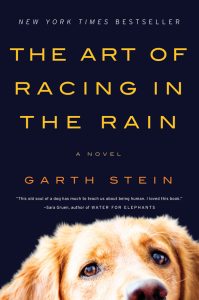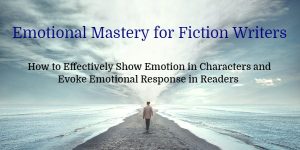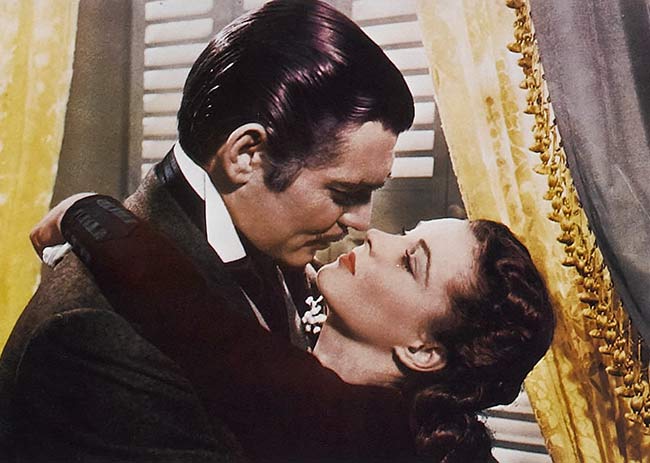Evoking Emotions in Readers in a Masterful Way
In this series on masterful writing, we’re now looking at emotion. Masterful showing of emotion, masterful “telling” of emotion, and masterful evocation of emotion.
Perhaps the hardest thing for a writer to do well is to manipulate emotion. I say “manipulate” because one of the definitions of the word is “to operate in a skillful manner.” I am not using the word in its more negative connotations of insidiously controlling or affecting things or people for a harmful purpose.
We writers want to manipulate our characters and our readers. We want to masterfully evoke emotion in our readers because, as Donald Maass says in The Emotional Craft of Fiction, readers don’t just read; they respond.
Masterful writers don’t just show characters emoting and expect readers to feel the same feelings. Every writer should understand that just because a character is afraid or angry, it doesn’t make the reader afraid or angry.
Even if a writer adeptly shows a character feeling emotions, that doesn’t guarantee the reader will feel anything at all.
So it behooves writers to dig into this topic of evoking emotion, which is a slippery animal, to be sure.
In last week’s post, we saw how breaking the “show, don’t tell” maxim can sometimes be a good idea. Telling about a character’s emotions in a narrative, when done well, can effectively evoke a response from readers. We looked at some posts on masterful narrative scenes, which are scenes that are mostly “telling,” They aren’t playing out the scene in real time with dialogue and character reaction, which is what “showing” is all about. Yet, they are powerfully effective.
In addition to telling what a character is feeling, through his thoughts and/or describing his actual feelings, and showing the character emoting through body language (white-knuckled fists, clenched jaw, etc.), masterful writers can do something even more powerful—they can manipulate their readers to feel things other than what the character is apparently feeling.
Manipulating Readers’ Feelings
Think about real life. You might see on the news children hungry, suffering, brutalized. They might be feeling despair, hopelessness, fear. But perhaps, because you see the circumstances through a different lens, you might feel frustrated, angry, even furious.
We writers want to think carefully about the emotions we hope to evoke in our readers. We want to think about why we want them to feel a certain way. And again, if I show children begging on the street and adeptly convey the emotions they are feeling, that doesn’t necessarily mean you, the reader, are going to feel compassion or anger or sadness.
You can see what a ginormous challenge this is.
Maass quotes Hemingway in that wonderful writing craft book: “Find what gave you the emotion . . . Then write it down, making it clear so the reader will see it too and have the same feeling as you had.”
Pay Attention to Your Own Emotions
That’s a great first step to learning how to manipulate reader emotions. In addition to examining how you emotional react to things you see around you or on TV, pay attention to those moments when you feel strongly while reading a novel.
Have you ever read a passage in a novel that made you cry? Stirred up indignation? Real terror? I am often moved by passages I read in both fiction and nonfiction. Masterful writers can wrench emotional reaction from me even with random passages.
I recently gave a memoir-writing workshop in which I read various passages to share beautiful writing styles. In more than one instance I got so choked up, I could barely speak. This wasn’t because I had read the entire memoir and felt connected to the writer. Some of these passages I’d found just by flipping through pages looking for interesting writing.
Why did these few paragraphs here and there evoke such strong emotion from me? Because they touched on universal feelings. They triggered images that connected to powerful emotions.
These writers spoke not about painful things they’d experienced but insights into the human condition that I shared with them. Or that at least resonated with me. They didn’t “show” the emotions they were feeling, or even “tell” what those emotions were. But the observations they made about themselves and their world moved me.
Maass says that emotions are most effectively evoked by trickery—when the reader isn’t noticing we are manipulating her. He says “Artful fiction surprises readers with their own feelings.”
I can honestly say that, as a reader, the best novels do just that. They evoke such emotions from me—such unexpected emotions—that I am stunned by my own reactions.
This doesn’t mean a writer’s key objective with any novel is to accomplish this at every turn. This is a masterful thing to do, but we writers want to evoke emotion throughout our novels—big, small, expected, and unexpected. Even when we know what emotion is being stirred in us, when we see what’s coming, it doesn’t reduce the impact.
When I began to read the chapter in The Art of Racing in the Rain in which Enzo, the beloved narrator dog, is dying, I knew what was going to happen to me. Most people relate to losing a pet. Most people share that universal affection for sweet animal companions. While I have met many readers who confessed they wept their heart out reading this joyously sad scene, I imagine some readers weren’t moved at all. But I bet almost everyone who read that book felt something. You don’t bother to read a novel told in “first person dog POV” if you don’t like dogs.
 But here are two things I want to say about that passage: First, the key to its brilliance lies not only in the universal resonance of “it’s so horrible to lose someone (person or animal) you love,” but I hinted at the masterful execution of the scene with the words joyously sad. I chose that phrase to make a point: when unexpected emotions are evoked in us, it awes us.
But here are two things I want to say about that passage: First, the key to its brilliance lies not only in the universal resonance of “it’s so horrible to lose someone (person or animal) you love,” but I hinted at the masterful execution of the scene with the words joyously sad. I chose that phrase to make a point: when unexpected emotions are evoked in us, it awes us.
Pay attention to that.
You wouldn’t expect a scene watching a dog die, one that breaks your heart, to make you so happy at the same time. Even laughing. That’s what makes that scene so amazingly brilliant. Because the whole time I was crying in anguish, I was laughing with joy. And it was absolutely authentic in every way. And utterly surprising as much as it was totally expected.
Second: there is something to be said about building intimacy with characters. In other words, it might be terrifically hard to evoke emotion in readers over a character they have only just been introduced to.
We’re told to get readers to bond with our protagonist within the first couple of pages, something few writers can do well. Yes, we might get readers interested in our characters and even riveted by their personalities and actions in the opening scenes, but do we truly care for them? Depending on your genre and story, you might not want readers to care for your protagonist all that much (at the start).
As we grow attached to characters throughout the reading of a great novel, we care more about them. And that makes it easier for emotion to be evoked in us. All along the way, a writer must carefully manipulate readers’ emotion, in a deliberate fashion, to try to get them to feel what he wants them to feel.
I think writers often fall short for a number of reasons.
One reason: the writer is aiming for only the obvious big emotions, such as joy, sadness, fear, and anger, to name a few. People are complex. Our emotions are complex. We rarely just feel anger. Underlying anger could be fear, hurt, a sense of betrayal, a feeling of being misunderstood. If we don’t mine deep into our own feelings to uncover the complexity of their makeup, we aren’t going to succeed in evoking those complexities in readers.
Instead of thinking, “I want my reader to feel sad,” how much more masterful would it be to dig deep into the many emotional nuances we experience when any given event occurs.
Do what Hemingway instructed. When you feel something, write down what action took place that made you emote. Then dig into the emotions and learn not just why you feel this way but what exactly you are feeling. What thoughts led you to those feelings? If you can nail the thoughts, which are words, you can put similar thoughts (words) into your narrative and character’s voice.
That’s the first step toward evoking emotion in readers in a masterful way.
If you haven’t read The Art of Racing in the Rain, I highly recommend it. AND I suggest you NOT read the passage to follow, as it may spoil the book for you. Those of you, however, who have read the book may need to grab a box of tissues (again). Pay attention to the incongruous, unexpected emotions you feel. Note the universal feelings Enzo expresses that make you think “Me too!”
The dawn breaks gently on the horizon and spills its light over the land. My life seems like it has been so long and so short at the same time. People speak of a will to live. They rarely speak of a will to die. Because people are afraid of death. Death is dark and unknown and frightening. But not for me. It is not the end. . . .
“Yo, Zo!” [Denny] calls to me when he sees me. “How are you feeling?”
“Like shit,” I reply. But, of course, he doesn’t hear me.
“I made you pancakes,” he says, cheerfully.
I force myself to wag my tail, and I really shouldn’t have, because the wagging jostles my bladder and I feel warm droplets of urine splash my feet.
“It’s okay, boy,” he says. “I’ve got it.”
He cleans up my mess and tears me a piece of pancake. I take it in my mouth, but I can’t chew it, I can’t taste it. It sits on my tongue limply until it finally falls out of my mouth and onto the floor. I think Denny notices, but he doesn’t say anything . . .
I don’t want Denny to worry about me. I don’t want to force him to take me on a one-way visit to the vet. He loves me so much. The worst thing I could possibly do to Denny is make him hurt me . . .
I go to Denny, and I push my muzzle into his thigh.
“There’s my Enzo,” he says.
And he reaches down out of instinct; we’ve been together so long, he touches the crown of my head, and his fingers scratch at the crease of my ears. The touch of a man.
My legs buckle and I fall.
“Zo?”
He is alarmed. He crouches over me.
“Are you okay?”
I am fine. I am wonderful. I am. I am.
“Zo?”
He turns off the fire under the frying pan. He places his hand over my heart. The beating that he feels, if he feels anything at all, is not strong . . .
My soul has learned what it came to learn, and all other things are just things. We can’t have everything we want. Sometimes, we simply have to believe.
“You’re okay,” he says. He cradles my head in his lap. I see him . . .
I saw a documentary once. It was about dogs in Mongolia. It said the the next incarnation for a dog—a dog who is ready to leave his dogness behind—is as a man.
I am ready.
And yet . . .
Denny is so very sad; he will miss me so much. I would rather stay with him and Zoe here in the apartment and watch the people on the street below as they talk to each other and shake each other’s hands . . .
“It’s okay,” he says to me. “If you need to go now, you can go.”
I turn my head, and there, before me, is my life. My childhood. My world.
My world is all around me. All around the fields of Spangle, where I was born. The rolling hills covered with the golden grasses that sway in the wind and tickle my stomach when I move over them. The sky so perfectly blue and the sun so round.
This is what I would like. To play in those fields for a little longer. To spend a little more time being me before I become someone else. This is what I would like.
And I wonder: Have I squandered my dogness? Have I forsaken my nature for my desires? Have I made a mistake by anticipating my future and shunning my present?
Perhaps I have. An embarrassing deathbed regret. Silly stuff . . .
I feel his warm breath on my neck, his hands. He leans down to me, though I can no longer see him, he leans down to my ear.
The fields are so large I could run forever in one direction and then run forever back. There is no end to these fields.
“It’s okay, boy,” he says softly, gently, into my ear . . .
When a dog dies, his soul is released to run until he is ready to be reborn. I remember.
“It’s okay . . . You can go . . .”
Before me I see my world: the fields around Spangle. There are no fences. No buildings. No people. There is only me and the grass and the sky and the earth. Only me.
“I love you, boy.”
I take a few steps into the field, and it feels so good, so nice to be in the cool air, to smell the smells all around me. To feel the sun on my coat. I feel like I am here.
“You can go.”
I gather my strength and I start off and it feels good, like I have no age at all, like I am timeless. I pick up speed. I run.
“It’s okay, Enzo.”
I don’t look back, but I know he’s there. I bark twce because want him to hear, I want him to know. I feel his eyes on me but I don’t turn back. Off into the field, into the vastness of the universe ahead, I run . . .
I hope you paid attention to the complexity and the unexpectedness of so many lines and emotions. Enzo is about to die, but he says “I am wonderful. I am fine” because “I am. I am.” He isn’t just saying this; we know exactly what he means. Garth Stein does a brilliant job of not only conveying Enzo’s complex emotions, which are both expected and unexpected, but evoking so many emotions in the reader.
This scene reminds me of the moment in Forrest Gump when Forrest is at Jenny’s grave speaking to her and he says, “Momma always said dyin’ was a part of life. I sure wish it wasn’t.” Of course, Tom Hanks’s delivery of the line breaks our hearts in its simplistic truth, but the emotional power packed in those few words, even written on a page, evokes intense emotion. What’s unexpected is the simplicity of the statement that is so universal. Forrest speaks for us all, speaks our heart.
Enzo does too.
I hope this look at evoking emotion is inspiring and challenging to you. Your thoughts?
Read part 2 of Evoking Emotions in a Masterful Way HERE.
Want to master the emotional craft of fiction?
Dive into the online course Emotional Mastery for Fiction Writers!
In this course, you’ll be given tools to show emotions in your characters. You’ll be given techniques to help spark emotional response in your readers. What is going to bring it all together for you is practice. Study and practice. And you’ll have exercises in this course to help you put into practice what you learn.
There are two facets of emotion in fiction: conveying what your character is feeling and evoking emotion in your reader. We’ll look at these two facets separately and in de pth. Yet, they are intrinsically connected.
pth. Yet, they are intrinsically connected.
Emotional mastery requires writers to set up the dynamics of a scene in such a visual, textural way that readers can’t help but feel what they are meant to feel. Understanding that emotional mastery requires a twofold approach—the emotional landscape of both the character and the reader—is the first step.
Want to learn how to become a masterful wielder of emotion in your fiction? Enroll in my new online video course, Emotional Mastery for Fiction Writers.
You’ll get lifetime access to all the videos and more than three dozen downloadable assignments. And with a 30-day money-back guarantee, you have NOTHING to lose by jumping in. Sign up NOW.
This course will challenge you to become an “emotion master.” Are you ready and willing to go on this journey deep into emotional territory? If you want your characters to move your readers, take the plunge!












There’s one passage in AE VanVogt’s “Earth Last Fortress” that is so unexpectedly terrifying that the first time I read it I screamed out loud. Even worse I was on a train.
The trick VV used was to build up in the reader’s mind an expectation that the protagonist’s escape was succeeding, then suddenly shatter that illusion.
I learned a lot from that.
Creating an utterly unexpected reaction in the reader is the greatest achievement an author can reach. I go for that goal often (not sure I succeed). I’ll have to check out that book. I had a similar reaction to the last page of One Hundred Years of Solitude (Marquez). I jumped up out of my chair, my mind blown, my mouth open, shaking all over. It was an amazing experience! Readers love to be shocked, stunned, left speechless.
Yup, cried again over Enzo. Great book.
Once again, Susanne, great insight and example to give writers. Every writer should offer universal feelings to their readers. I always learn something new here. Thanks! I’ve shared the post online.
An excellent article and reading the extract of Enzo’s passing was a real treat. Delightful. I was reminded of how I employed similar tactisc when writing about our dead cat at his own funeral, making observations about the silly humans putting flowers on ‘this other bugger in the hole’. Only this extract is masterful and my story was not!
Instructive. I’ve got to try this technique, in a short story first perhaps.
Beautiful! By giving us Enzo’s death scene, you’ve combined really valuable teaching with a profound emotional experience. Never expected the latter! Thank you.
The Art of Racing in the Rain is an unexpectedly complex book. I think the emotions Stien is able to project are intensified by our relationship with our dogs. Don’t we all just love our doggies!
That is a heart breaking passage! I guess that is the point though, to make the reader feel as much as possible. To evoke in him a sense of loss and understanding and joy, all at once. That is my greatest wish as a writer, To make people feel and see what I have already seen, as vividly as if they had really been there.